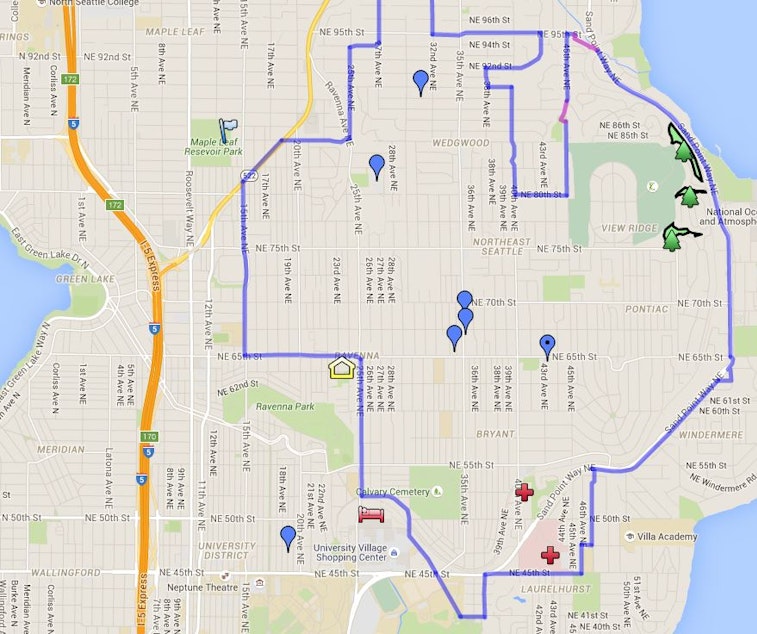Hidden Doors That Only Seattle's Orthodox Jews Can See

After the sun sets on Fridays, Orthodox Jews may not push a stroller. Nor may they carry tissues or books outside their homes.
But there’s a loophole: People who live within certain neighborhood boundaries may carry books and babies outside.
That’s because they live within an eruv, which is an imaginary line around a neighborhood. The area within an eruv is considered private domain. That’s important if you want to carry something on the Sabbath.
Seattle Rabbi Moshe Kletenik told KUOW’s Kim Malcom why the eruv is so helpful to observant Jews.
“That will allow people to push strollers with their children in them, to carry books or other items, to bring perhaps a gift when they visit their friends' homes if they join them for a Sabbath meal. So it certainly enhances the observance.”
Sponsored
There are three eruvs in the Seattle area – in North Seattle, in Seward Park and on Mercer Island. Kletenik said the tradition goes back hundreds of years in Europe, but the first eruv in Seattle was erected in 1990.
“In the United States over the last three or four decades it's become much more common,” he said.
Outsiders would have difficulty spotting an eruv. They are typically marked by telephone wires and electric poles that already exist along the street.
If those wires and poles come together to create the appearance of a doorframe, the eruv is formed naturally. But sometimes they don’t come together, and the community must add wires to create that frame.
Members of the five Orthodox synagogues in Seward Park keep a close eye on the eruv.
Sponsored
“The eruv has to be inspected weekly. Someone has to go around the perimeter of the eruv and make sure that all of the poles are in place, that all of the wires are there, that a utility company has not moved a pole suddenly and therefore there's a gap in the eruv,” he said. “So it's inspected weekly to ascertain that it's intact, and sometimes repairs are required.”
The average person in Seattle, one of the country’s least religious places, might have a hard time identifying the parts of an eruv overhead. But there are maps online (see the one for North Seattle below), and the Seward Park eruv even has a Twitter account (@eruv) to let people know whether it’s up or under repair.
The Jewish Sabbath is often referred to as “an island within time.”
“It’s a day of tranquility and of rest, of family time together,” Kletenik said. “There is no computer, no cell phone. It’s a time when we focus on spiritual growth and bring family and friends together in a way that is difficult in the way we live now.”
Sponsored
Produced for the Web by Gil Aegerter.

